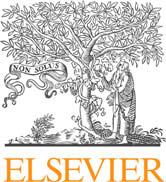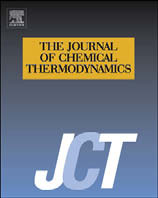Abstract title centered and bold in upper- and lowercase
Preparation and in vitro evaluation of tretinoin nano-emulsion system Mahsa Sabouri 1, Effat Sadat Farboud 2, Mansour Nasiri Kashani 3 Zahra Jafari Azar 1, Saman Ahmad Nasrollahi 3٭ 1. Department of Pharmaceutics, Islamic Azad University of Pharmaceutical Sciences, Tehran, Iran 2. Department of Pharmaceutics, School of Pharmacy, Tehran University of Medical Sciences, Tehran, 3. Center for

 J. Chem. Thermodynamics 40 (2008) 1661–1665
Thermodynamic properties of caffeine: Reconciliation of availableexperimental data
Vladimir N. Emel’yanenko, Sergey P. Verevkin *
Department of Physical Chemistry, University of Rostock, Hermannstrasse 14, D-18051 Rostock, Germany
Molar enthalpies of sublimation of two crystal forms of caffeine were obtained from the temperature
dependence of the vapour pressure measured by the transpiration method. A large number of primary
experimental results on the temperature dependences of vapour pressure and phase transitions have
been collected from the literature and have been treated in a uniform manner in order to derive sublima-
tion enthalpies of caffeine at T = 298.15 K. This collection together with the new experimental resultsreported here has helped to resolve contradictions in the available sublimation enthalpies data and to
recommend a consistent and reliable set of sublimation and formation enthalpies for both crystal forms
under study. Ab initio calculations of the gaseous molar enthalpy of formation of caffeine have been per-
formed using the G3MP2 method and the results are in excellent agreement with the selected experi-
Ó 2008 Elsevier Ltd. All rights reserved.
J. Chem. Thermodynamics 40 (2008) 1661–1665
Thermodynamic properties of caffeine: Reconciliation of availableexperimental data
Vladimir N. Emel’yanenko, Sergey P. Verevkin *
Department of Physical Chemistry, University of Rostock, Hermannstrasse 14, D-18051 Rostock, Germany
Molar enthalpies of sublimation of two crystal forms of caffeine were obtained from the temperature
dependence of the vapour pressure measured by the transpiration method. A large number of primary
experimental results on the temperature dependences of vapour pressure and phase transitions have
been collected from the literature and have been treated in a uniform manner in order to derive sublima-
tion enthalpies of caffeine at T = 298.15 K. This collection together with the new experimental resultsreported here has helped to resolve contradictions in the available sublimation enthalpies data and to
recommend a consistent and reliable set of sublimation and formation enthalpies for both crystal forms
under study. Ab initio calculations of the gaseous molar enthalpy of formation of caffeine have been per-
formed using the G3MP2 method and the results are in excellent agreement with the selected experi-
Ó 2008 Elsevier Ltd. All rights reserved.